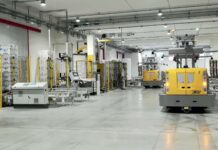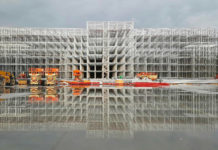William Nelson, President, E80 Group North America, states a case for full scale material handling automation as an answer to today’s challenges.
Would you ever imagine putting in a new production line without automatic end-of-line packaging (wrapping, bundling, case packing), or for that matter decide it’s more efficient to palletise by hand? Imagine what that would look like from a personnel staffing perspective, not to mention the efficiency of a human stacking product for eight hours a day – coffee and restroom breaks not withstanding! Think about the toll such labour takes on the individuals engaged in a high-pressure, high-output, repetitive tasks standing day in and day out at the end of a modern rewinding line. Good luck! So, what’s the difference once the product is packaged and palletised?
From the end of production lines, a swarm of fork trucks transport finished goods to a warehouse and then to a shipping bay – time after time after time. Isn’t this just an extension of the previous high-pressure, high-output, unsafe and repetitive tasks we talked about at the end of a production line? What benefits do manpower bring to these tasks? What risks are inherent in fork trucks racing around a facility, crossing paths with each other, honking horns at intersections and blind corners?
These questions are obvious provocations, but really, can we shift our thinking a little bit towards a safer, more sustainable, highly predictable solution? Can we consider a new paradigm in which automation of all material flows is part and parcel of any plant design?
Over the past three distribution editions we have explored how automation technology can be deployed as the final frontier of efficiency, how both internal and external logistics energise productivity, and the economics of automation working equally for small, medium, and large producers.
We’d like to discuss in this edition a further evolution in the marketplace: Automation is a Must, not an Option. We’ll talk about all the different options available in the production and distribution space as well as some new technological developments that provide nearly infinite product mix capabilities to support market future needs.
Let’s go with the flow of material movements within an ideal factory.
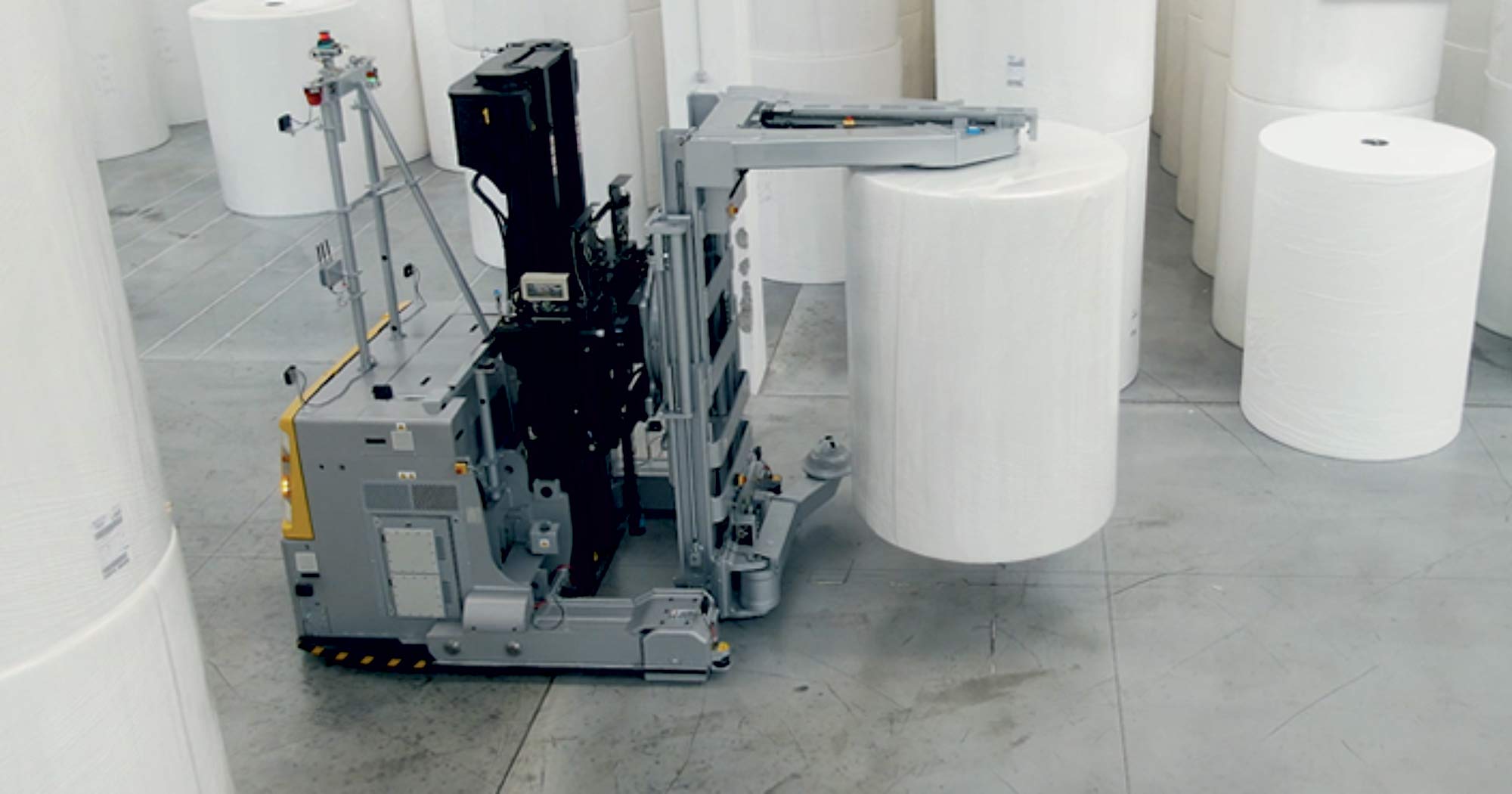
Raw material handling
As a start, an ideal factory excels in the efficient management of raw materials. Employing innovative raw material storage solutions such as the Double Deep storage system, maintains impeccable order within its inventory, and reduces space required. This enables seamless monitoring and streamlined management of stock, ensuring precise, timely deliveries to production lines—exactly where and when they are needed for optimal operations.
Raw material handling with automation ensures:
Total traceability to reduce waste and bottlenecks.
Deliver on-demand to production line, at the right place and at the right time.
Inventory control and auto-replenishment.
These benefits apply also when it comes to parent roll handling. Based on roll characteristics, space availability, and WH methods, you have four options that are capable of handling all known parent roll weights and dimensions on the market today:
1. LGVs with clamps
2. Prong LGVs
And two completely new technologies that prevent any damage to the paper and save space respectively:
3. ANT PR-LGV
4. UNICORN LGV
Elephant LGV, with clamps. Time-tested and proven concept allowing stacking up to three levels, delivery of parent rolls, and pick up of cores over about 100 systems installed just in North America, the Elephant is proven to reduce roll waste by up to 2% over manual handling as well as provide important functions such as back-to-back roll placement, which is favoured by insurance carriers. Efficient stacking optimises the use of warehouse space by up to 7% and reduces the risk of fire by minimising the “chimney” effect.
ANT, designed to interface directly into the unwind stand of the converting machine to deliver full parent rolls and return used cores. This concept provides increased safety as the operator does not have to interact in the parent roll handling process, in addition to being highly maneuverable and space-saving.
Unicorn LGVs, the next-generation laser-guided vehicle (LGV) specifically developed to lift, move, and deposit jumbo rolls weighing up to five tons and of three metres in diameter both vertically and horizontally. Patented by the E80 Group, this LGV prevents damage to the paper by automatically inserting two chucks inside the core and avoiding any contact with the external surface. Efficient stacking optimises the use of warehouse space by up to 7% and reduces the risk of fire by minimising the “chimney” effect.
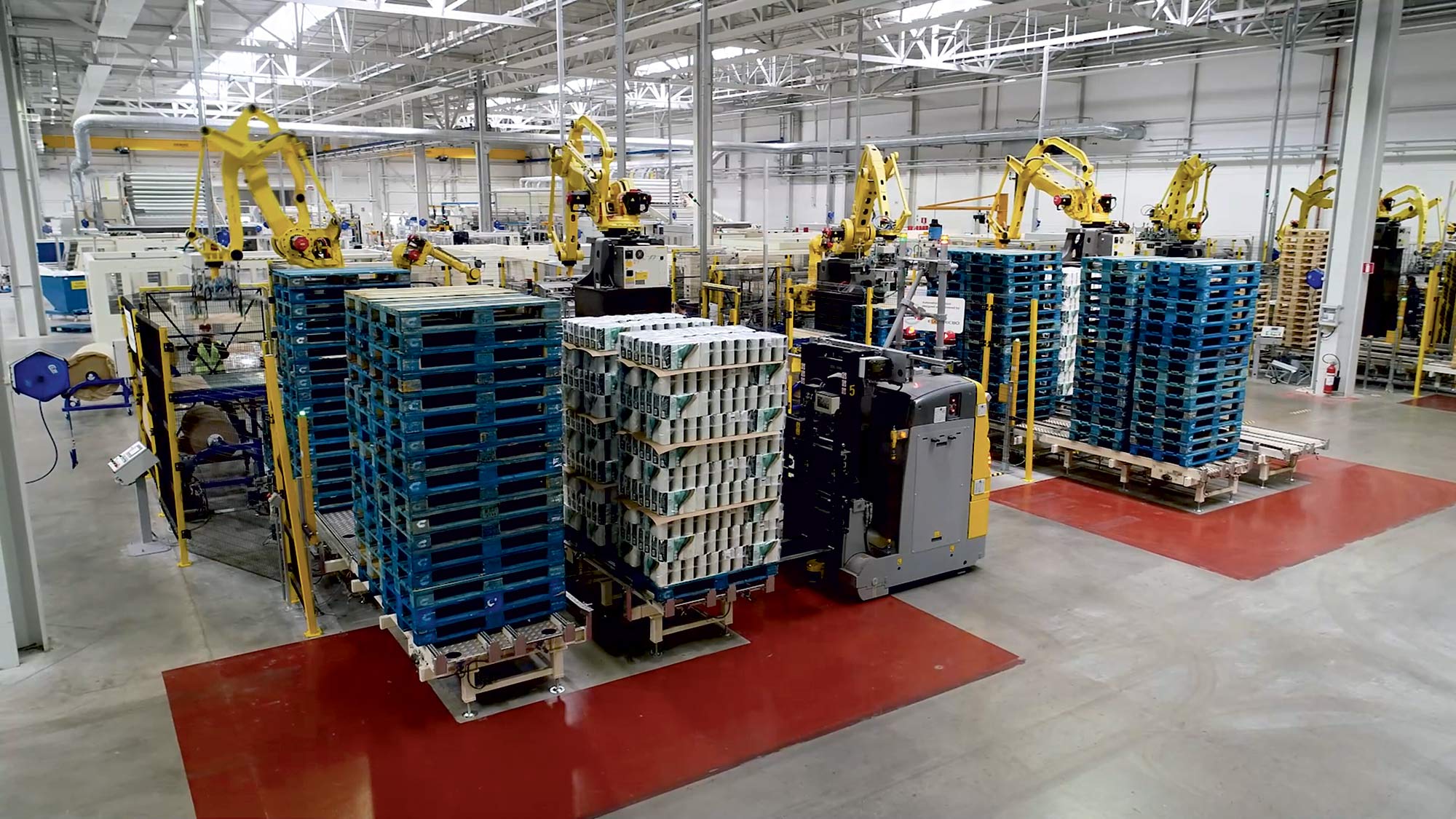
Finished goods handling
At the end of the production lines, robotic palletisers integrate seamlessly into finished goods handling systems, including LGVs and ANT, providing a wide range of options based on your finished good warehousing strategy.
BLOCK STORAGE is a standard in finished goods tissue handling, allowing up to four levels stacking heights for all products, including display pallets and unit load of cased products. It is the simplest and lowest cost solution from an infrastructure point of view.
DRIVE-IN racking has successfully been employed in the tissue industry, while it is widely used in the beverage and food industry up to 11 metres. It provides for higher density in a vertical sense.
ASRS provide for the highest density utilisation of space. All product types can be stored independent of dimensions. One key benefit of high bay storage is speed in preparing outbound shipping loads and flexibility to mix loads.
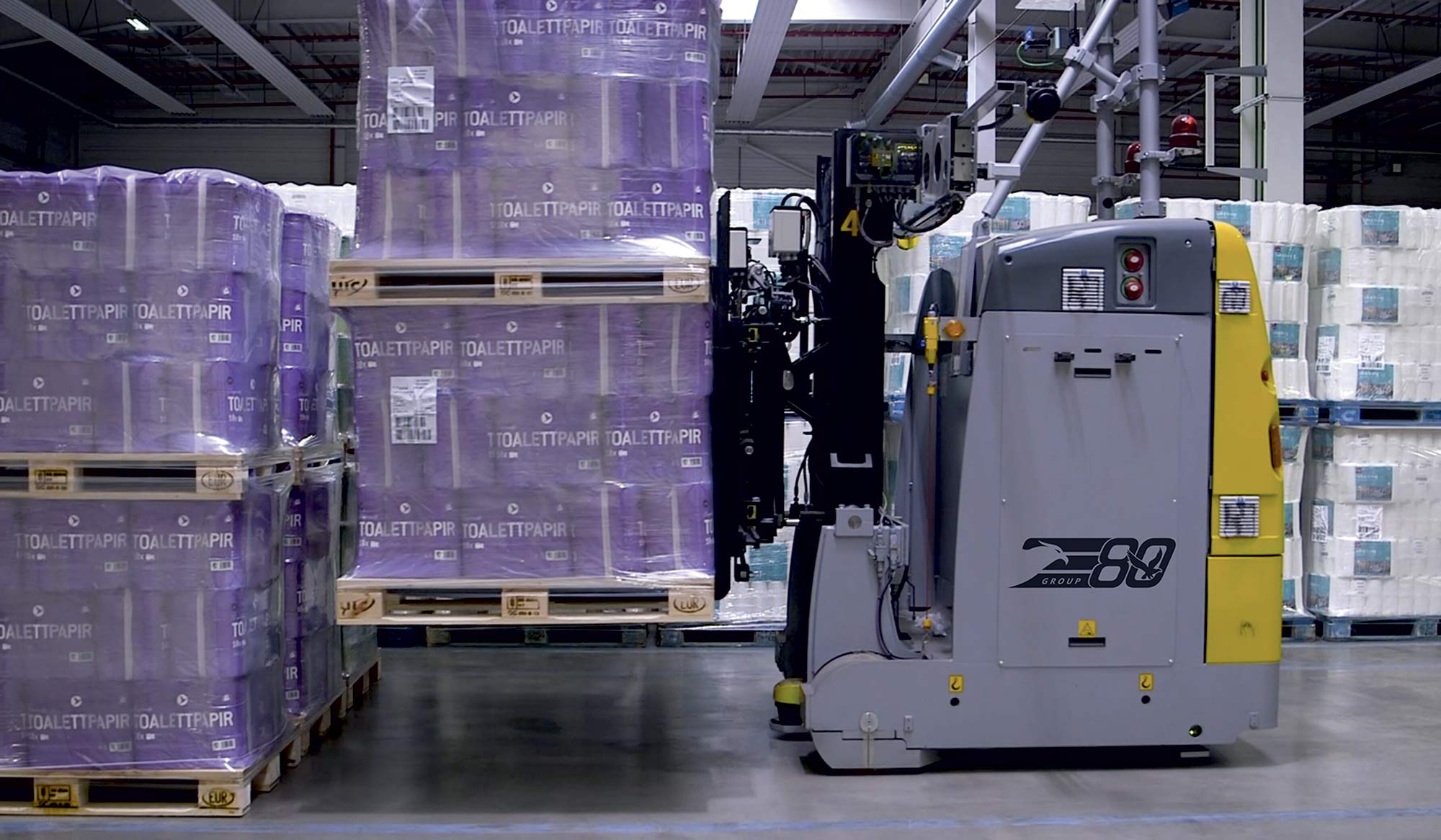
Towards distribution centres of the future
Global distribution centres (DCs) have to deal with a significant increase in logistical challenges, driven by heightened market competition and increasing customer demands for enhanced service quality. The trends underscore a growing range of products focused on achieving quicker and more efficient time-to-market, alongside the proliferation of innovative distribution channels, including advanced last-mile delivery solutions. The role of integrated supply chain systems and the digitalisation of intralogistics processes is pivotal in ensuring business success.
One example of innovation for pallet customisation is EAGLE TRAYS, a solution that tackles the issue of multi-shape and multi-size picking by implementing innovative robotic systems capable of preparing pallets with non-homogeneous products. The system is a combination of software and hardware, both developed in-house. The software allows the customer to select the right SKUs to build the pallet with the maximum stability.
The reality is that on a single pallet you could have a box of tissue, a bundle of towels, a box of facial tissue, and a case of diapers all prepared for a small retailer. The system intelligently selects the configuration of the pallet based on stability factors, meaning a safer product for end consumers.
The ability to configure a more stable pallet offers benefits beyond retailer convenience, including reduced shipping costs. There’s less damage to the product and better utilisation of the pallet itself. If you optimise the pallet footprint, then you can also optimise the loads on the truck, leading to fuller trucks for better utilisation of your vehicles.
All of this is made possible through the interaction of different automated vehicles and machinery to carry out tasks with high precision and speed. In our vision of distribution centres of the future, we see a web of automation that handles materials, coordinates movements, and optimises processes seamlessly.
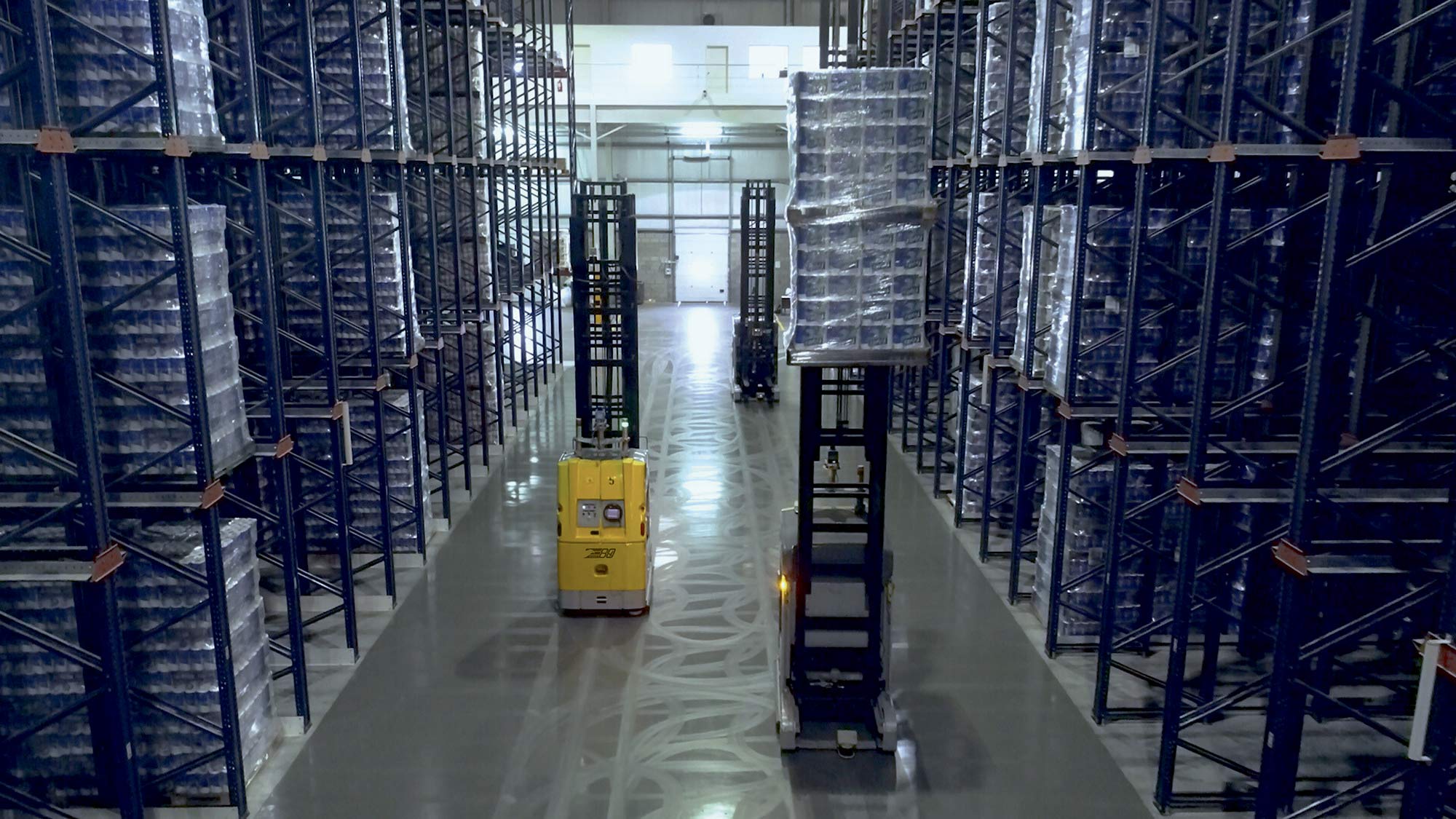
Streamlining operations with smart software
In the ever-evolving landscape of automation, software plays a pivotal role in orchestrating seamless intralogistics. E80 proprietary Software Platform is designed to manage high-volume LGV fleets and robotic systems, dialoguing with customer’s ERP and ensuring the integrated and automated flow of materials throughout your plant. It acts as the conductor of this intricate symphony, communicating with production lines, palletisers, and wrappers, while coordinating warehouse movements from receiving to shipping. This smart decision-making software not only optimises resource utilisation but also provides real-time performance monitoring, predictive traffic management, and intelligent route selection. With a single durable interface, it guarantees efficiency, safety, and total product traceability, ensuring that your operations are faster, safer, and more sustainable. As the digital economy reshapes distribution, embracing integrated automation and smart software solutions becomes not just an option but a necessity for businesses looking to thrive in the modern era.
We return to our original question: how much do you value safety, sustainability and efficiency?
As we have seen, there are endless possibilities to discover about automation. And it’s the only way you can be future-ready, enhancing efficiency from the inside out, and continuously making your operations faster, safer, more sustainable, and more profitable.
You can work hand and hand with your supplier to develop custom solutions made just for you. E80 Group is investing in logistics concepts of the future at its welcoming InnovE80 collaborative Hub – downtown Chicago – a creative home to shape the future of your business.
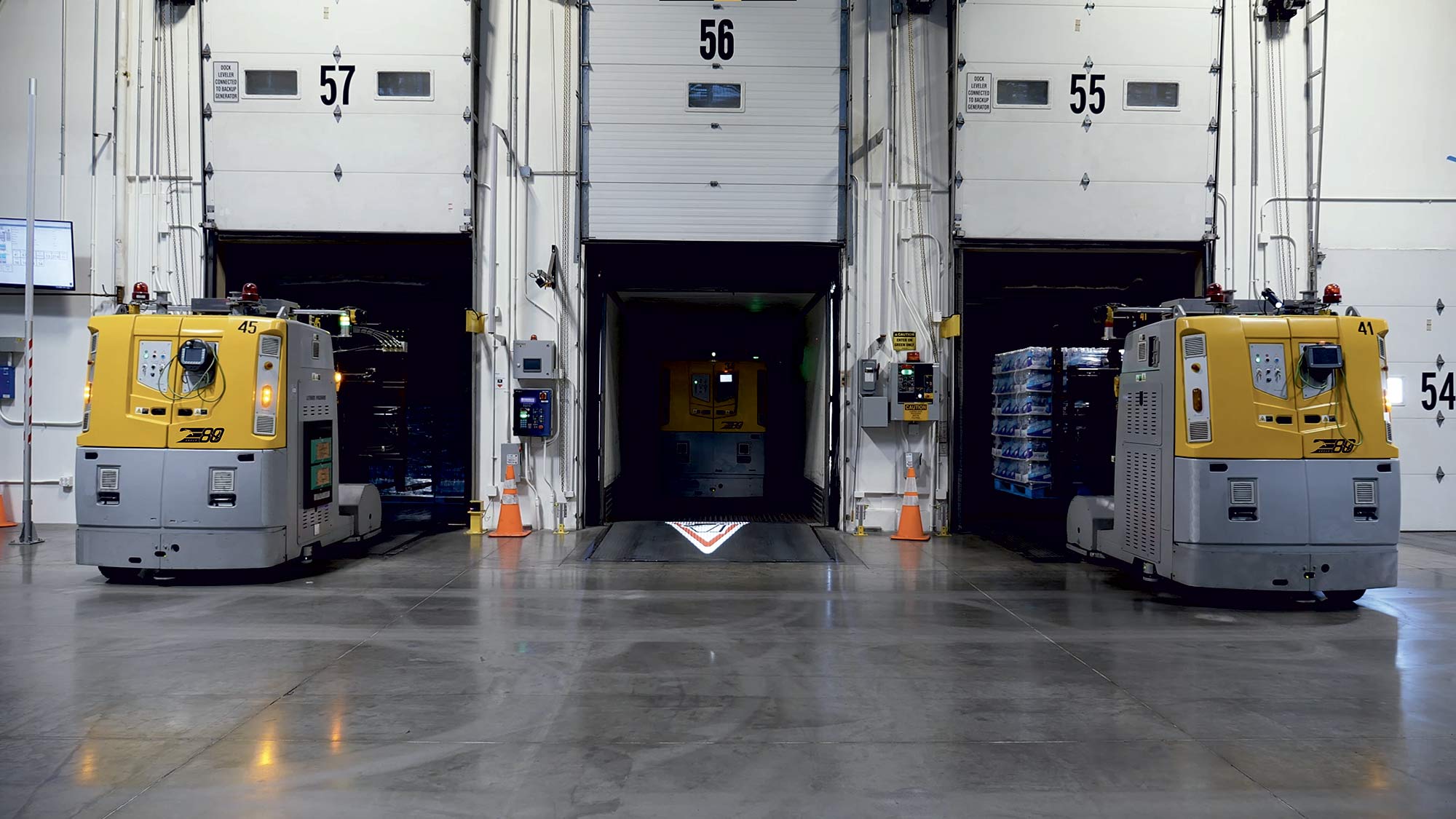
This article was written for TWM by William Nelson, President, E80 Group North America.






















